By Rick VanSickle
The year was 1998. I was transferred to the Calgary Sun after two years as an editor at the Toronto Sun and 10 years as the editor-in-chief of the Ottawa Sun. My family and I had no idea what awaited us in Alberta. We had our doubts.
Also in the report: We run down both the online and in-store Vintages releases for May 14 and 21 featuring Le Clos Jordanne, Bachelder, Hidden Bench, Kacaba and Southbrook.
During this period of my life, I was an avid collector of wine and had no problem lining up outside LCBO stores hours before they opened for the twice monthly Vintages releases in Ottawa. It was fun chasing wines that Wine Spectator or Robert Parker (yes, that guy) had rated high, or wines that trusted LCBO consultants tipped me off to. It was the thrill of the chase, and it was the only system I had been exposed to. It all seemed so weirdly normal, and few challenged the LCBO’s existence because we had been fed a steady diet that buying wine from the government builds hospitals. The more you drink, the more we save lives (or something like that). We all drank the Kool-Aid.
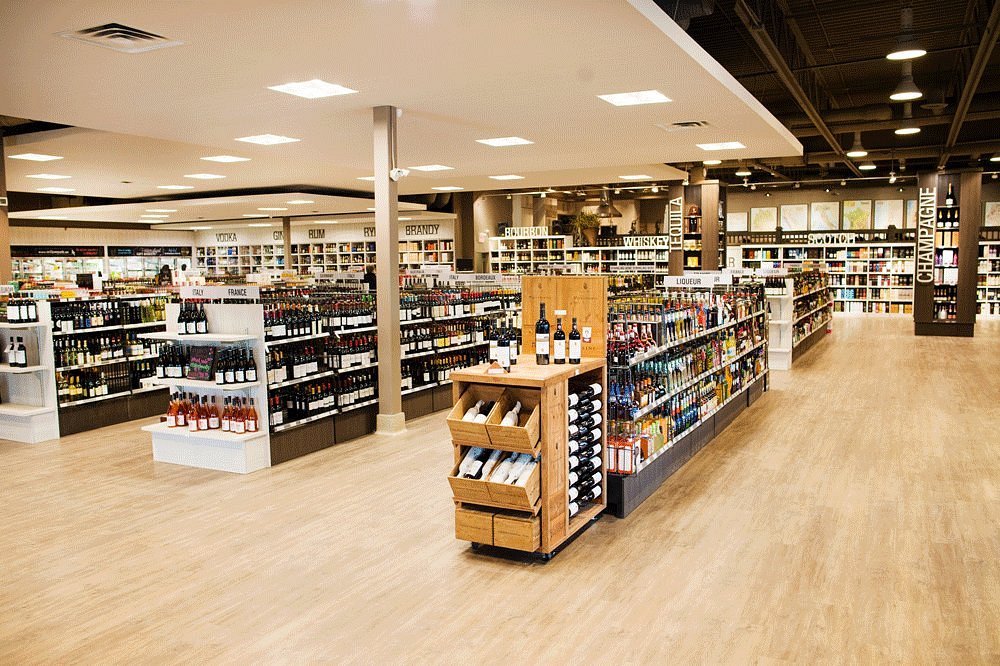
So, after a few weeks of getting settled in Calgary and waiting on movers to deliver not only all of our Earthly possessions, but also the hundreds of bottles of wine we had collected over the years in Ottawa, it was time to learn how Albertans do wine shopping.
I was shocked. There were no government-run wine, beer, or spirit stores in Alberta. No cookie cutter outlets scattered throughout the province all stocking the very same wines for the very same price. What was happening??? There were big stores, hole-in-the-wall stores. There were wine-only stores, stores that sold everything from cheap beer to the world’s most expensive wines and spirits. There were wine shops that specialized in Aussie wine, there were stores that leaned toward the Rhone, Burgundy and new, adventurous wines. There were stores, five of them, that had grandfathered licences that allowed them to directly import any wine from any winery anywhere in the world; you just had to ask. There were grocery liquor stores built right in the parking lots beside the main store so you could load up on bread, milk and sugar and then fill up on beer, rum, and wine without moving your car. And guess what? That bottle of Mondavi Cabernet Sauvignon at the No Frills could be $10 or $20 cheaper than at another store down the street. The government didn’t set prices, it collected taxes on the liquor sold. What a concept!
Shocked and bewildered at first, because I was indoctrinated by the LCBO, I quickly embraced the free enterprise system of buying wine. Shopping sprees were a wonder … off to Willow Park to peruse the endless aisles and nooks for the best wines in the world (and chat with my friend Gerry who worked there in retirement), over to Metrovino for the cool new wines, up to Richmond Hill Wines for top, hard-to-find Australian wines … and many stops in between. And everywhere you went you were guided by enthusiast staff who knew their stuff. This is not a dig at LCBO consultants, who do a great job, are knowledgeable and friendly, but working in a flawed system.
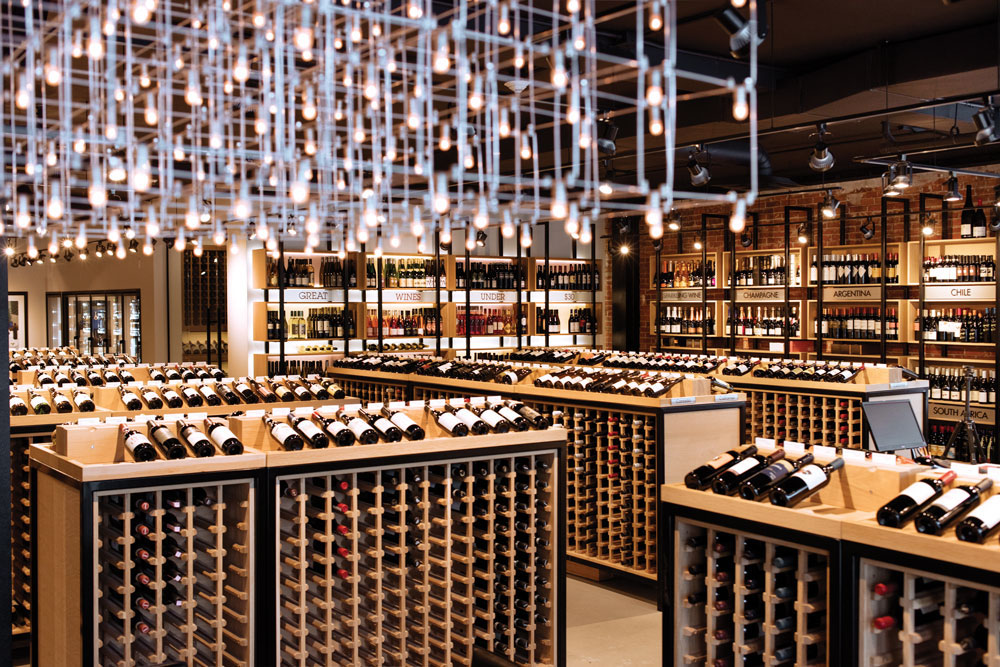
For all the blustery chatter from Ontario’s LCBO marketing choir, for a Canadian wine lover there is no greater place to buy wine than in Alberta. The province privatized liquor retailing in 1993 and no one could predict just how well it would work. One of the features is the flat tax charged on a bottle of wine instead of taxing the full price on a bottle of wine. That means that bottles in the mid to high range are far less expensive than anything you will buy at the LCBO.
With privatization, Alberta saw a big jump in retail liquor stores from a pre-privatization number of 208 stores with 2,200 products listed to more than 1,300 stores across the province in 2015, giving Albertans access to almost 20,000 products. Compare that to 8,000 in Ontario (at the time) and 8,000 in B.C. (before partial privatization).
In Alberta, store owners have total freedom to stock the wines they want, the wines their consumers want, and are not bound by the restrictive measures of LCBO buyers. Niche markets have been established by the many boutique shops in Alberta who have chosen to specialize on certain regions or styles that set them apart from other shops. The benefit of all this is a better selection of wines, competitive pricing across the board, a satisfying wine shopping experience and a more convenient way of buying what you need, when you need it.
Let’s just say, it didn’t take long for my mind to be completely blown by what was happening in Calgary after living in Ontario most of my life. I quickly became a vocal advocate for the privatization of the LCBO from that point on. And here we are.
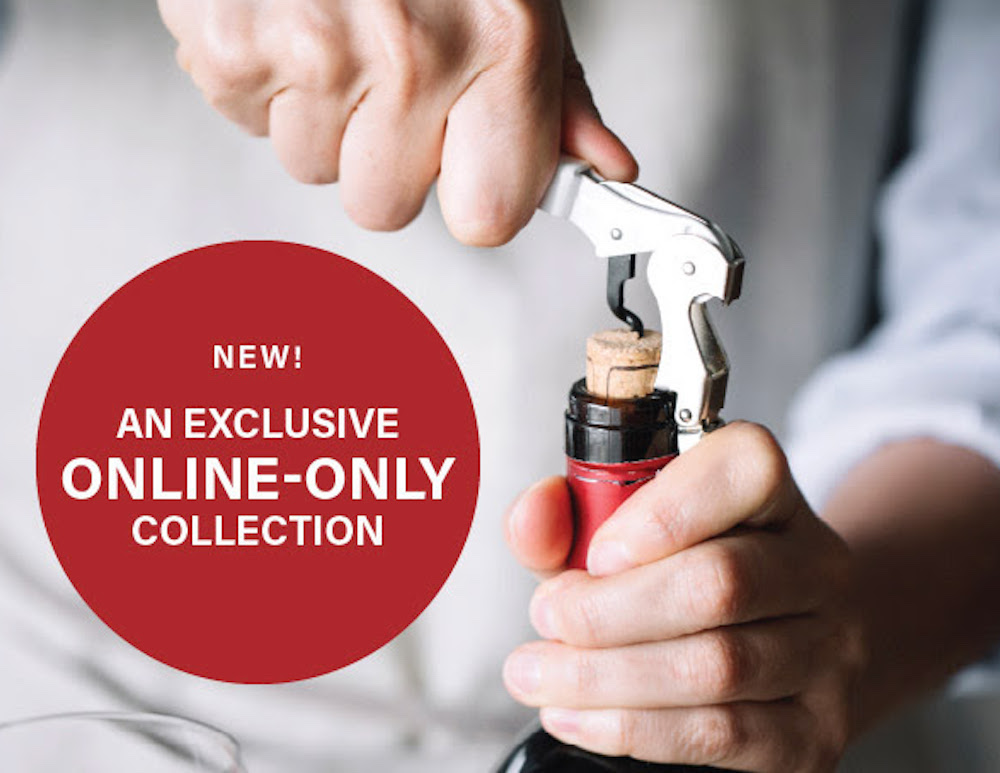
It’s been a long, slow process to gain any traction in ridding ourselves of the antiquated CONTROL part of the LCBO. Grocery store wine and beer was a decent start and bottle shops popping up during COVID is another solid step in the right direction. But is there another clue that points to the demise of the LCBO as we know it?
It was announced with little fanfare about a month ago and we will see the first result of that on Saturday when the usual Vintages release comes out. This time, and from now until next fall, there is only ONE in-store Vintages release per month, the second being replaced by an online release only.
It would appear to a skeptic that the LCBO is moving down market for physical wine releases and up-market for the more expensive, interesting wines exclusively online.
In doing this, the LCBO is steering consumers to the burgeoning realm of the on-fire bottle shop industry emerging in Ontario. There is less desire for serious wine lovers to peruse the aisles of the LCBO looking for something new and cool because there are less of those wines making it to the shelves. And, this year, the LCBO in its wisdom, even cut back on the number of Vintages stores in the province, further eroding the experience for those who live near those former boutiques.
We have fewer and fewer reasons to go to the LCBO and the latest developments only speed up the path a free enterprise system.
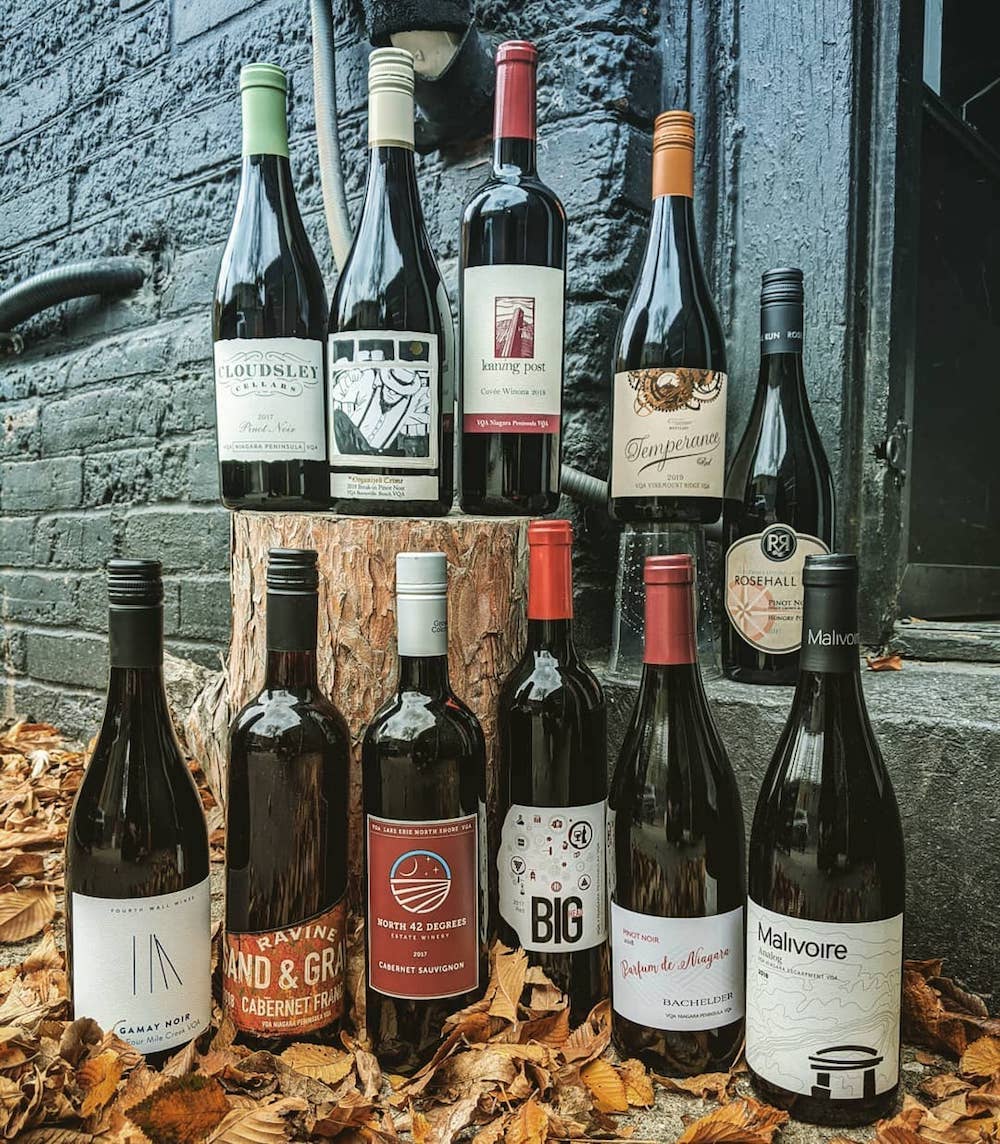
I have no idea why the LCBO thinks a once-a-month online Vintages release is good for everyone. It’s definitely less convenient for consumers who could already shop for those wines online if they wanted to. It’s certainly less attractive for Ontario wineries who use the LCBO to get their bottles in front of the eyes of wine lovers who can’t make it to the wineries. In fact, it’s more lucrative for them if you buy their wines that are being released online at Vintages directly online on the winery website. And it’s not good for LCBO employees, especially consultants, who have come to expect interaction with consumers when new products are released.
It’s baffling to me that the LCBO wants to decrease the in-store experience while privately owned bottle shops are doing a fabulous job marketing and promoting their products that have both a physical and online presence.
Bottle shops owned, operated, and staffed by the private sector are permanent in Ontario; you can’t put that genie back in the bottle.
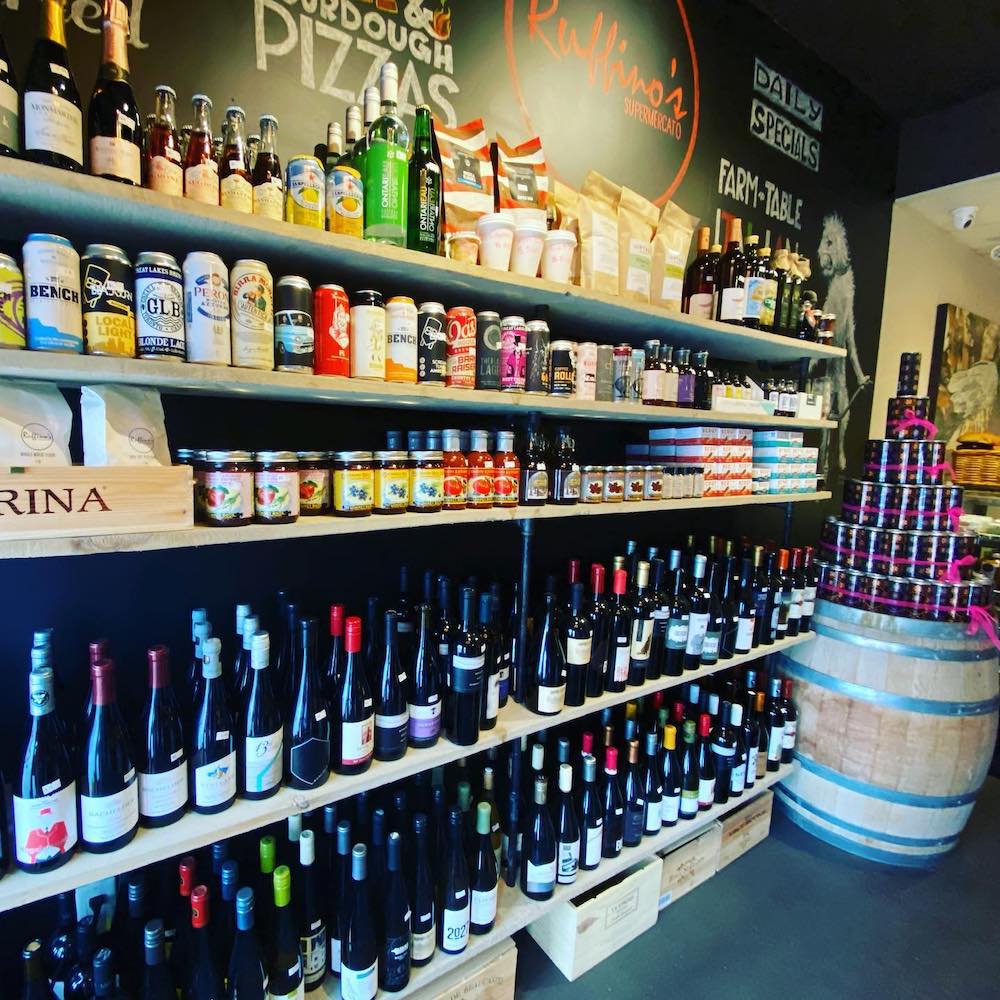
While Toronto has led the way with the bottle shop revolution, Niagara is quickly following suit. Chef Ryan Crawford really got the ball rolling locally at his Ruffino’s Pasta Bar & Grill bottle shop in Niagara-on-the-Lake that features a well-curated array of local and international wines. Other restaurant-based bottle shops have popped all over Niagara. Dispatch, Bolete and Mahtay Café have interesting wines, beer, cider and ready to drink cocktails by the bottle with many others joining the fray with varying degrees of selection including retail beer, wine and spirits.
Marcel Morgenstern (below), who is sales director at PondView Estate Winery and Burnt Ship Bay Estate Winery, as well as the founder of the Facebook group Restaurants of Niagara, which focuses on members sharing their great food experiences in Niagara, is opening his HillFire Kitchen & Bottle Shop on Monday May 16. It will feature over 75 Niagara wines with local ciders, beers and spirits along with an in-house bakery and BBQ featuring a selection of sandwiches made from in-house smoked meats.
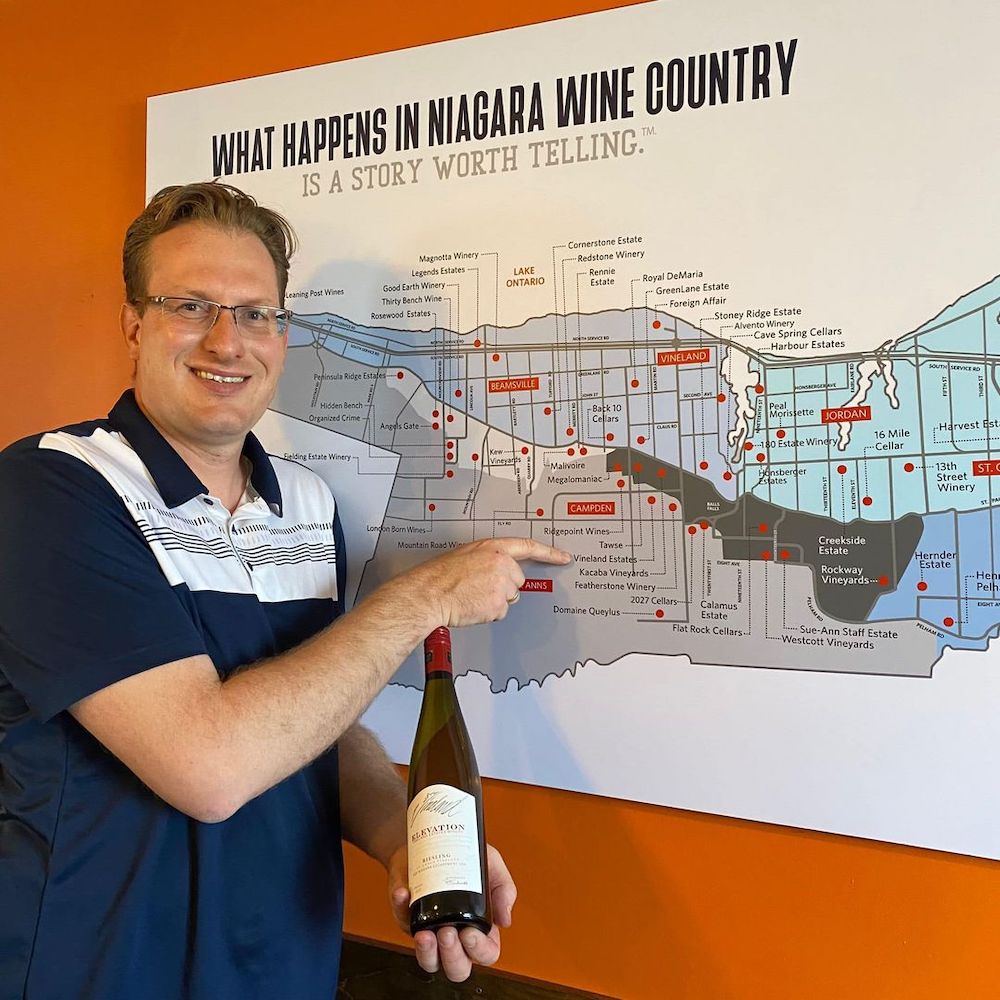
And coming soon to James Street in St. Catharines is Archives Wine and Spirit Merchants, an ambitious new local bottle shop, tasting bar, and community hub devoted to Canadian beer, wine, cider, spirits, and beyond. Licencing issues have delayed the opening, but the owners are confident of opening soon.
As for the LCBO, progress seems to elude them while all around bottle shops are popping up quicker than pot stores and consumers are flocking to something Ontario has waited a long time to enjoy.
Saturday is the first online release of Vintages wines that replaces the second release of the month. We run down what’s available from Niagara (a much smaller selection than the prior physical release) and the May 21 in-store Vintages release.
Vintages release May 14, online only
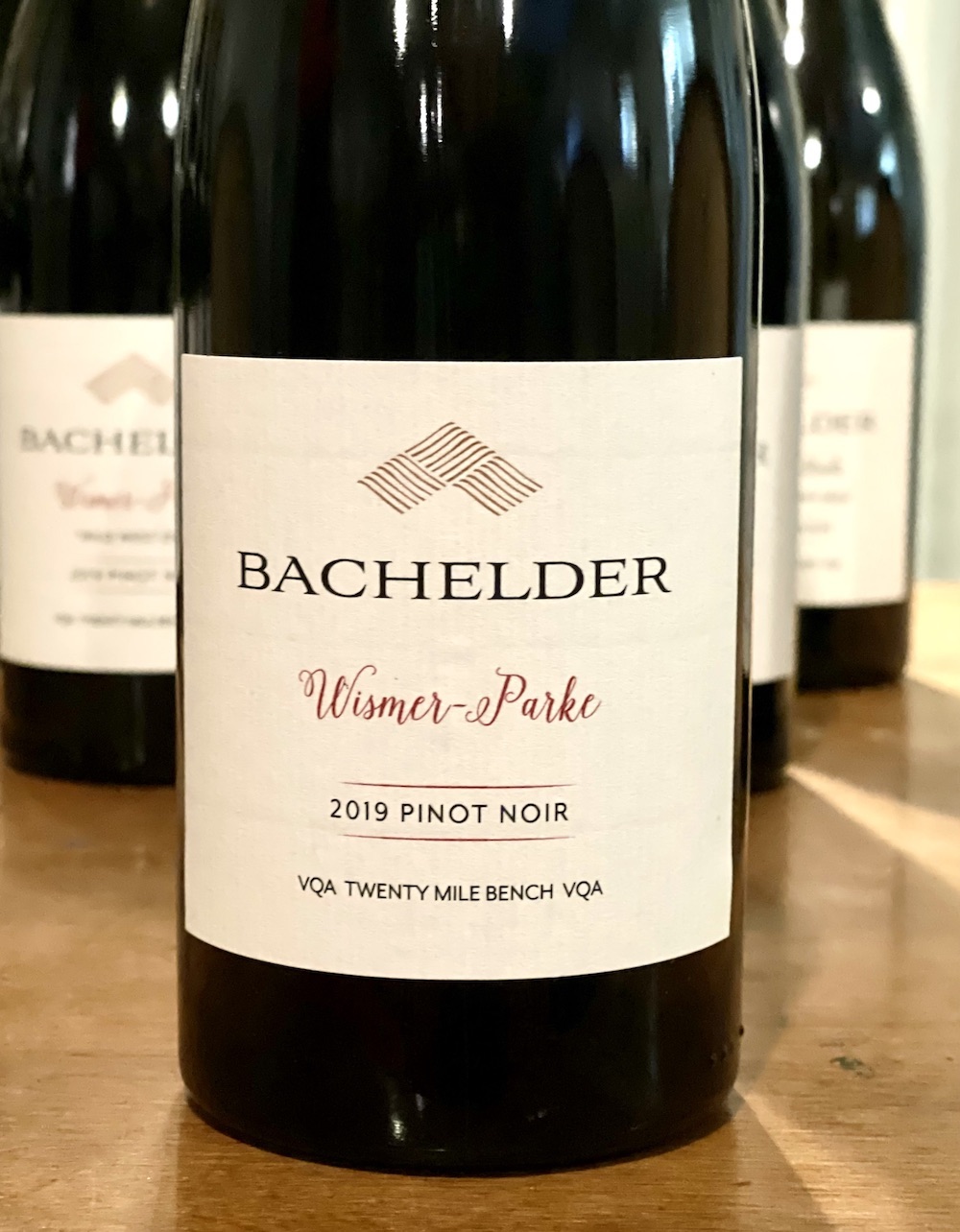
Bachelder Wismer-Parke Pinot Noir 2019 ($45, 92 points) — Thomas Bachelder sources the fruit for this Pinot from the Wismer-Parke Vineyard, which is 5.5 km from the lake at an altitude of 133 metres, from the “sweet spot” of the Twenty Mile Bench on reddish magnesium and dolomitic-limestone clay soils with a solid silt component. The vines were planted in 1999. A more robust style of Pinot with a nose of wild raspberries, dark cherries, woodsy/earthy notes, anise, cranberries, Christmas spices and gamy notes. There’s a floral note on the palate but also an earthy/savoury feel with red berries, cassis, lifted spice notes, firm tannins, structure and a juicy lift on the finish. Cellar 7+ years.
Also released online but not reviewed:
• Rosewood Legacy Heritage Apple Cyser Mead 2020 ($20 for 500 mL)
• Creekside Iconoclast Sauvignon Blanc/Semillon 2018 ($23)
Vintages in-store release for May 21
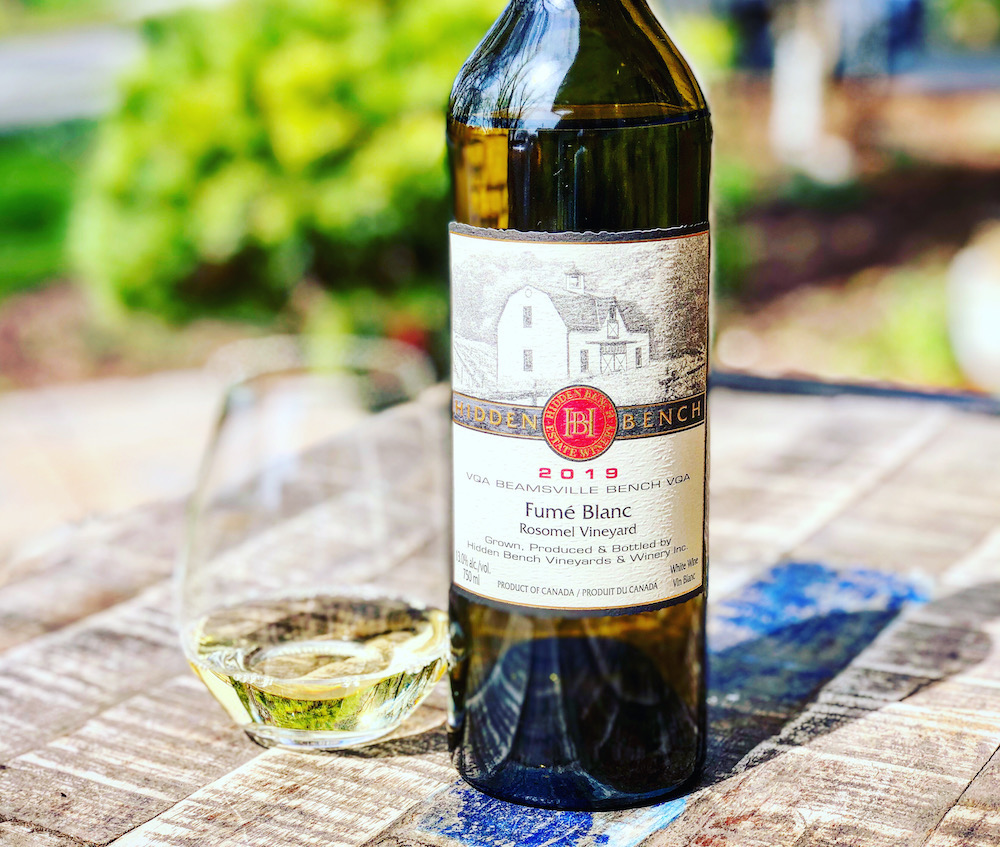
Hidden Bench Fumé Blanc 2019 ($30, 92 points) — This Sauvignon Blanc from organically certified estate vineyards at the estate that gets its “fumé” swagger from gentle oak aging. The style is inspired by the oaked Sauvignon Blanc wines of Bordeaux and Pouilly-Fumé. It has an expressive nose of grapefruit, green apple, light herbaceous notes, flinty minerality and subtle oak spices. It has elegant texture on the palate with flint, herbs, grapefruit, apple, subtle grassy notes, integrated spices and a fresh, lifted finish. It can be cellared 4+ years.
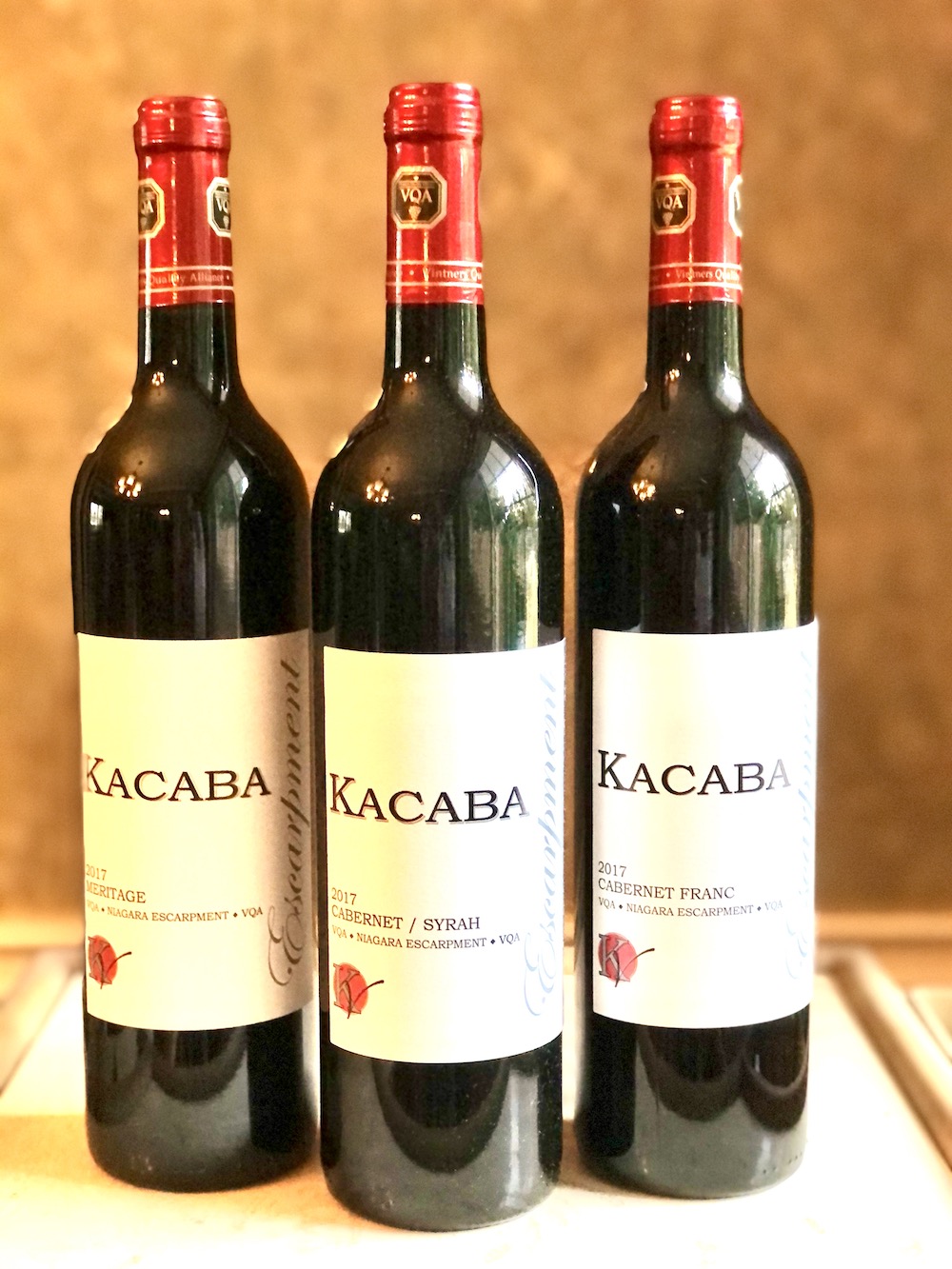 Kacaba Cabernet/Syrah 2017 ($30, 90 points) — The blend is 46% Syrah, 27% Cabernet Franc and 27% Cabernet Sauvignon with aging in French and American oak barrels for 13 months. The Syrah shines in this red blend with a meaty, smoky nose followed by black currants, cassis, anise, pepper, savoury herbs and spice. There’s more smoke on the palate with grilled meats, dark berries, leather, peppercorns, sage, spice and a tangy finish. Can cellar 5+ years.
Kacaba Cabernet/Syrah 2017 ($30, 90 points) — The blend is 46% Syrah, 27% Cabernet Franc and 27% Cabernet Sauvignon with aging in French and American oak barrels for 13 months. The Syrah shines in this red blend with a meaty, smoky nose followed by black currants, cassis, anise, pepper, savoury herbs and spice. There’s more smoke on the palate with grilled meats, dark berries, leather, peppercorns, sage, spice and a tangy finish. Can cellar 5+ years.
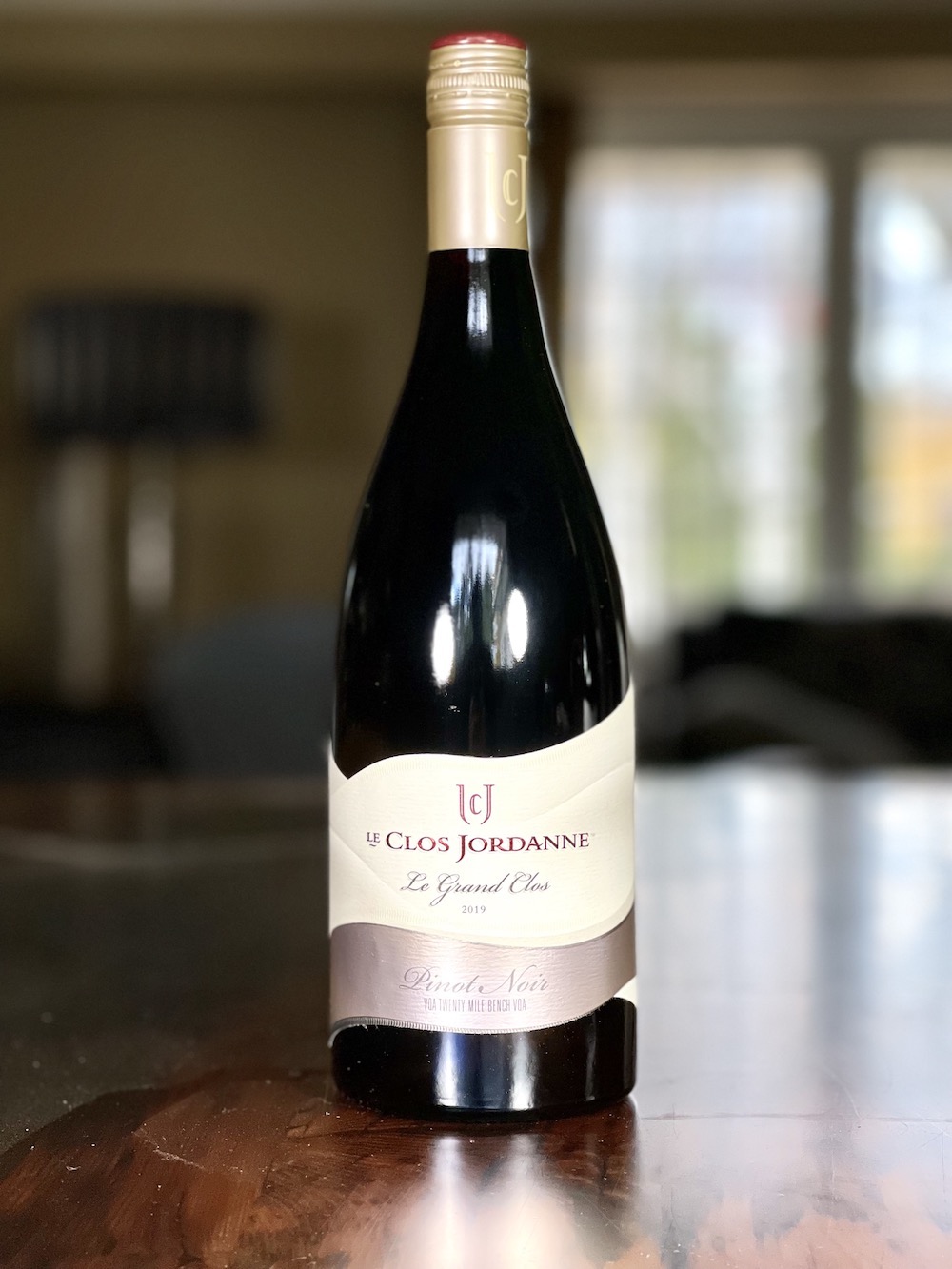
Le Clos Jordanne Le Grand Clos Pinot Noir 2019 ($45, 92 points) — This single-vineyard Pinot Noir from Arterra Canada’s showcase brand Le Clos Jordanne will impress fans of winemaker Thomas Bachelder’s ethereal style — but you will have to wait for. And by wait, I mean buy, cellar and wait for it. There are two sides to this intriguing vintage; the nose which is well on its way to expressing the wine completely, and the palate, which is a bit backward and disjointed immediately out of the bottle. I tasted this wine right from the bottle upon receiving and by the time I tasted the wine soon after opening, I found it on the closed and muted side. I elected to give it a night or two in the bottle, introducing some oxygen, and I am glad I did — it began to open up beautifully. The nose is lifted with perfumed cherries, dark berries, raspberry bramble, fresh turned earth, steely minerality, subtle cassis, well integrated oak spices and light cedar notes. On first taste, it has a savoury/meaty edge with the fruit held in check, on second and third tastes, and up to two days later, it showed a complex array of ripe red berries and cassis on top and then complementing earthy/spicy accents and fine-grained tannins that add structure all leading to highly finessed and fresh finish. I highly recommend a heavy decant on this wine if planning on drinking it now, or cellar 3+ years and up to 10 to fully realize the full potential.
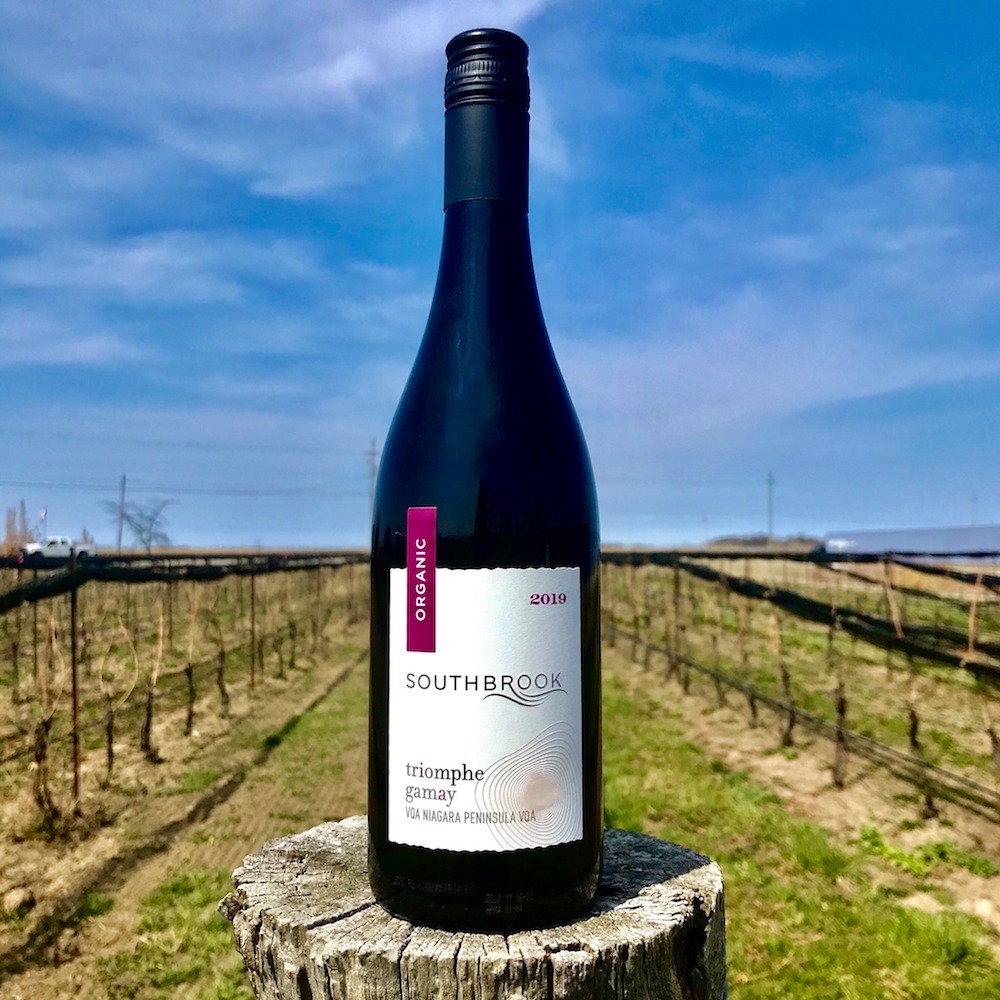
Southbrook Triomphe Gamay 2019 ($28, 90 points) — At this level of Gamay, winemaker Ann Sperling is thinking more in line with Beaujolais village: “A little lighter but really delicious to drink, maybe on the patio, refreshing and almost too easy to drink.” Up a level, she also makes another Gamay, a cru-like bottling more akin to north of Beaujolais where the grape originated, which is bigger and bolder. It has pure aromas of red berries, meadow flowers, plums and subtle savoury and spice notes. It’s clean and juicy on the palate red berries joined by a touch of anise, earth, muddled herbs, spice, and a fresh finish. Highly gulpable.
Also release but not reviewed:
• The Foreign Affair Whisky Barrelled Conspiracy 2019 ($22)
• Kew Vineyards Old Vine Chardonnay 2019 ($24)
• Kew Vineyards Pinot Grigio 2018 ($15)
• Lakeview Cave Spring CSV Riesling 2019 ($30)
• Featherstone Four Feathers 2021 ($15)








Great article!
LCBO seems to be more interested in brand style wines than quality. It is a shame. I feel bad for the product consultants. I remember the frantic Saturday morning release frenzy.
Great article about the lcbo, but I fear the power of the union will hold back true Alberta style privatization for decades
What tremendous news, alternatives to the LCBO are badly needed! I’ve enjoyed shopping at Bolete recently for wine and some cocktail ingredients. I’m really, really excited for the Archives bottle shop which is near my house. From what I’ve seen I think it will be the first ‘full bottle shop’ we get in Niagara, maybe the province?
Some of these restaurants with bottle shop areas are excellent, though a full-on alternative to the LCBO is something to get excited about! The more the marrier.
Well said, I am sure the lcbo is full of marketing people who have no clue on marketing or wine for that matter.
I used to look forward to going to the store to talk with my consultant about each release and the wines they recommend.
Now even the consultants taste very few of the wines and none of the hard to get ones.
I now buy my wine directly through the wineries and consignment.
Good riddance LCBO!
If you live in the London area, you get the leftovers from the GTA. It’s a good thing I travel a lot so I can pick up items when I fly out of Pearson at the Mississauga store. When I’m in Alberta I stock up on whiskeys that are plentiful there but not existent in Ontario. I used to support the lcbo (for the good paying jobs) but they have lost me.